As part of our ongoing series on the collaboration between Kaged Supplements and GNC, we're shining a light on Kaged Test, the testosterone-booster entry in the Kaged Elite series.
We don't think anyone in our audience needs an in-depth explanation of why having more testosterone is generally a good thing – its ability to increase athletic performance and recovery while improving mood, libido, and overall life satisfaction has made testosterone optimization the primary goal of many male supplement consumers.
Well, we think Kaged really did it right with Kaged Test. The formula is awesome, and each ingredient efficaciously dosed. And we even have a newcomer: MR-10 is something we don't often see in the testosterone optimization category.
Before we start, check the Kaged Elite news and deals on PricePlow:
Kaged TEST Elite Series – Deals and Price Drop Alerts
Get Price Alerts
No spam, no scams.
Disclosure: PricePlow relies on pricing from stores with which we have a business relationship. We work hard to keep pricing current, but you may find a better offer.
Posts are sponsored in part by the retailers and/or brands listed on this page.
Ingredients
In a single 3-capsule serving of Kaged Test, you get the following:
-
KSM-66 Ashwagandha Extract (Withania somnifera) (root) (std. 5% withanolides) – 600 mg
Ashawgandha is an adaptogen, meaning it can help your body maintain hormonal homeostasis. Unpacking the definition just a little bit, an adaptogen can raise your body's levels of a certain hormone when there's not enough, but also lower it when it's too high. This context-dependent action makes adaptogens extremely useful for improving wellness and optimizing performance.
In one 2012 study, 64 adults experienced a significant drop in their cortisol levels after taking 600 milligrams of KSM-66 organic ashwagandha extract. That's the same dose and extract in Kaged Test! This study was especially interesting because it employed both subjective and objective measurements of stress. The subjects answered a questionnaire designed to gauge how stressed-out they felt, but also took a cortisol blood test.[1] KSM-66 positively affected both the questionnaire scores and the subjects' cortisol levels.
Significant improvement to emotional and hormonal health is a consistent theme in ashwagandha research.[2]
Ashwagandha and testosterone
Ashwaganda's anti-cortisol effects are a big part of why it's useful in a testosterone-boosting formula. Because cortisol and testosterone have opposite effects, lowering one is generally a good step toward raising the other. It's not surprising, then, that ashwagandha research consistently shows testosterone increases well into the double digits, with one study demonstrating increases in the range of 14% to 40%,[3] and another showing 10% to 22%.[4]
One reason we're big fans of ashwagandha is that its ability to boost testosterone is not limited to men with hormonal issues. As as matter of fact, ashwagandha has been shown to increase testosterone blood levels in active, young, healthy men who usually have solid testosterone levels to begin with.[4]
Perhaps related to its testosterone-boosting effect is ashwagandha's ability to improve athletic performance. Power output,[5] VO2max,[5] and one-rep max[4] are some of the benefits we've seen from ashwagandha supplementation.
Why KSM-66?
NutraBio's KSM-66 is the industry standard for ashwagandha, thanks to the rigorous independent lab testing conducted on each production batch. When it comes to hormone optimization, eliminating endocrine-disrupting compounds is key, so purity should be an overriding concern in testosterone formulas. That's why we love seeing KSM-66 used in Kaged Test instead of some mystery meat ashwagandha extract.
If you want to learn more about what makes KSM-66 so special, read our article NutraBio KSM-66 Ashwagandha: Trusted and Tested Ashwagandha for Everyone.
-
MR-10 (Proprietary Blend of Korean Dandelion and Rooibos Extracts) – 400 mg
The MR–10 blend of Korean dandelion and rooibos is relatively new, but we already have one very solid research study showing this ingredient can significantly increase testosterone synthesis in men.
In this double-blind, randomized, placebo-controlled study, 96 men over 45 years old were assigned to take either 200 milligrams of MR-10 or a placebo twice daily for 1 month. The total daily MR-10 dose was identical to what we have in Kaged Test, 400 mg/day.[6]
The subjects were very evenly matched in terms of age, weight, baseline hormone levels, and even height. The results speak for themselves:
The MR–10 blend, ginseng and rooibos, significantly increased total testosterone, free testosterone, and DHEA.[6]
Total testosterone, free testosterone, and DHEA (also a masculinizing hormone) increased by 14%, 22%, and 32%, respectively.[6]
The mechanism of action isn't completely clear, but we do know one important piece of the explanation. A previous study showed that Korean dandelion and rooibos can protect testicular Leydig cells from oxidative stress. This is important because Leydig cells are directly responsible for synthesizing the testosterone molecule.[7]
-
DIM (3,3' Diindolylmethane) – 120 mg
Diindolylmethane (DIM) is a metabolite of Indole-3-carbinol (I3C), a compound that naturally occurs in cruciferous vegetables like broccoli, kale, and cauliflower.[8] In humans, it's typically synthesized in the gut,[9,10] but we can supplement with it directly, thanks to products like Kaged Test. .
DIM's ability to downregulate aromatase (an enzyme responsible for converting testosterone into estradiol)[9] makes it a useful tool for increasing testosterone levels. This is mainly thanks to DIM's affinity for the aryl hydrocarbon receptor (AhR),[11] which, when activated, has an antagonistic effect on estrogen receptors.
Besides improving the overall testosterone-to-estrogen ratio, DIM also encourages the synthesis of health-promoting estrogens over harmful estrogens. Namely, IM can increase the body's production of 2-hydroxylated estrogens while decreasing production of 16-hydroxylated and 4-hydroxylated estrogens,[12-15] which is good since 2-hydroxylated forms are linked to a broad array of beneficial health outcomes[16,17] while the opposite is true for 16- and 4-hydroxylated forms.
Just to give one example, 2-hydroxylated estrogens are linked to lower levels of body fat and increased muscle mass.[18]
-
S7 (Green Coffee Bean Extract, Green Tea Leaf Extract, Turmeric Extract, Blueberry Extract, Broccoli Extract, Tart Cherry Extract, Kale Extract) – 50 mg
A proprietary blend of seven botanical extracts chosen for their high polyphenol antioxidant content, S7 consists of, by mass, 3% curcumin, 30% catechins, and 60% polyphenols. One study demonstrated that a clinical dose of S7 can cause a 270% increase in serum nitric oxide (NO).[19]
Here's an ingredient-by-ingredient breakdown of how S7 works:
- Green Coffee Bean Extract – Green coffee beans are simply unroasted beans. Compared to roasted beans, they have a higher concentration of chlorogenic acid (CGA),[20] which is great since CGA possesses significant antioxidant,[21] anti-inflammatory,[21] and anti-hypertensive[22] properties. It also seems that CGA can increase vascular tissue's response to exercise,[23] meaning you might get more out of your cardio.
- Green Tea Extract – naturally contains large amounts of polyphenol and catechin antioxidants,[24] the most famous being epigallocatechin gallate (EGCG). High EGCG intakes can accelerate lipolysis,[25,26] the process by which your body breaks down stored fat for fuel. Some studies show that EGCG can decrease dietary carbohydrate absorption,[27] which might discourage weight gain or even cause weight loss.
- Turmeric Extract – standardized for a bright yellow phytochemical called curcumin, a bioactive constituent that's largely responsible for turmeric's characteristic color. Curcumin is a massively anti-inflammatory compound, and has been proposed as at least an adjunct treatment for a wide range of conditions involving chronic inflammation,[28] including depression.[29] Curcumin can also help support exercise by increasing the body's antioxidant capacity.[30]
- Tart Cherry – great for recovery, as it's been shown to decrease muscle soreness and positively affect recovery indices like creatine kinase, lactate dehydrogenase, interleukin-6 (IL-6), and C-reactive protein (CRP) following high-intensity exercise.[31]
- Blueberry – also good for speeding up muscle recovery after exercise.[32] It can also decrease oxidative stress and systemic inflammation.[33]
- Broccoli – high in sulforaphane, a sulfur-containing compound that can improve vascular health by fighting inflammation.[34]
- Kale – high in uncommon antioxidants and polyphenols like quercetin and kaempferol.[35] Both of these have documented anti-hypertensive effects,[36] and offer some therapeutic benefit in a wide range of medical conditions.[37]
Need even more "greens" above the green tea catechins? See Kaged Elite Series Organic Greens
-
Boron (as Boron Citrate) – 10 mg
Boron is a mineral that plays a significant role in both testosterone and vitamin D synthesis.[38] Vitamin D, in turn, has the potential to boost testosterone production.[39] This implies that boron provides direct and indirect support for elevating testosterone levels.
In addition to aiding in vitamin D synthesis, boron also extends its half-life, ensuring that the vitamin D produced remains effective for a longer duration.[40] This contributes to maintaining higher peak levels of vitamin D in the bloodstream.
While a 2011 study suggests that supplemental boron can increase free testosterone (the biologically active form) and reduce estrogen levels,[38] it's worth noting that the study had a small sample size of just eight subjects. As such, it's advisable to approach this finding cautiously.
Nonetheless, there is substantial evidence supporting boron's pro-vitamin-D effects, as well as its ability to enhance the body's utilization of magnesium,[40] another mineral crucial for optimal testosterone production.[41]
-
Vitamin D (as Cholecalciferol) – 37.5 mcg (1,500 IU) (188% DV)
Cholecalciferol (vitamin D3) is our preferred form of vitamin D for one important reason: iI's the form naturally synthesized by the skin in response to direct sun exposure.[1] Naturally, cholecalciferol is the most biologically active form of vitamin D in the human body.
Vitamin D is a known hormone regulator with dual capability of reducing aromatase activity (the enzyme responsible for converting testosterone into estrogen)[3] while simultaneously stimulating direct testosterone production.[2,4] In simpler terms, men with higher vitamin D levels in their bloodstream also tend to have high testosterone levels.[2]
A pivotal 2011 study, conducted as a double-blind, randomized, placebo-controlled trial, showed that a daily dosage of 3,332 IU of vitamin D3 produced remarkable outcomes: a 25% increase in total testosterone and a 20% increase in free testosterone. Notably, the placebo group experienced no such changes.[4] Granted, the D3 dose in Kaged Test is roughly half of that used in the study, but 1,500 IU can go a long way toward getting you there. We actually prefer to see vitamin D dosed on the conservative side because it's easy to underestimate your intake and wind up taking too much.
PricePlow recommends pairing vitamin D3 with vitamin K2 for maximum benefit and safety.
-
Zinc (as Zinc Monomethionine) (OptiZinc) – 15 mg (136% DV)
Read more about Kaged Pre-Workout Elite
Zinc is one of the most crucial nutrients for optimizing testosterone production and is often referred to as the master mineral of the male endocrine system.
Even a slight deficiency in zinc can wreak havoc on testosterone production. In a study where researchers induced a marginal zinc deficiency by restricting subjects' dietary zinc intake, testosterone levels plummeted by a staggering 75%, dropping from 40 nmol/L to approximately 10 nmol/L.[42]
These same scientists discovered that supplementing zinc to elderly men with a mild zinc deficiency led to a doubling of their testosterone levels, elevating them from 8 nmol/L to 16 nmol/L.[42]
Even if one is not deficient in zinc, supplementation can still enhance the production of dihydrotestosterone (DHT),[43] a critical metabolite of testosterone responsible for the masculinizing effects associated with androgenic signaling.[44]
Conclusion
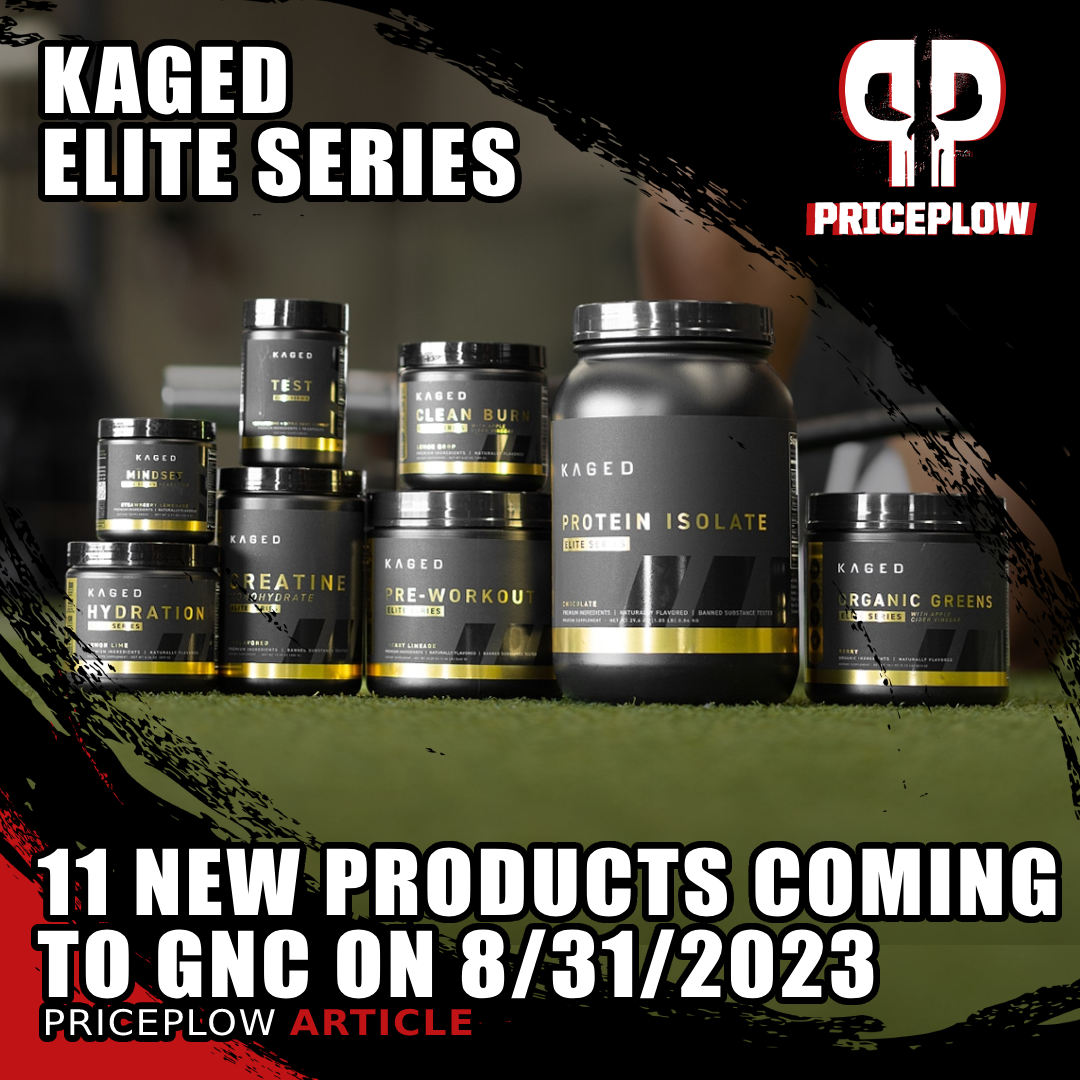
Read about the Kaged Elite Series, which was GNC's largest ever launch with 27 new SKUs that went live on August 31, 2023
Testosterone optimization is a funny category because the research literature is pretty clear on what's been shown to work and what hasn't. Too often, we see companies following social media trends with the inclusion of questionable testosterone boosters — not Kaged. Everything in this formula is solidly referenced.
We think the inclusion of S7 is smart. Increasing nitric oxide isn't, per se, related to testosterone, but it will give you many of the effects that you want from higher testosterone, including better exercise performance and, yes, sexual function.
The use of MR-10 is exciting. Again, when new ingredients show up in the consumer marketplace, it's often a little premature. But we already have peer-reviewed evidence showing that MR-10 can improve Leydig function, which is about as fundamental a testosterone-boosting mechanism as you'll find.
Kaged TEST Elite Series – Deals and Price Drop Alerts
Get Price Alerts
No spam, no scams.
Disclosure: PricePlow relies on pricing from stores with which we have a business relationship. We work hard to keep pricing current, but you may find a better offer.
Posts are sponsored in part by the retailers and/or brands listed on this page.
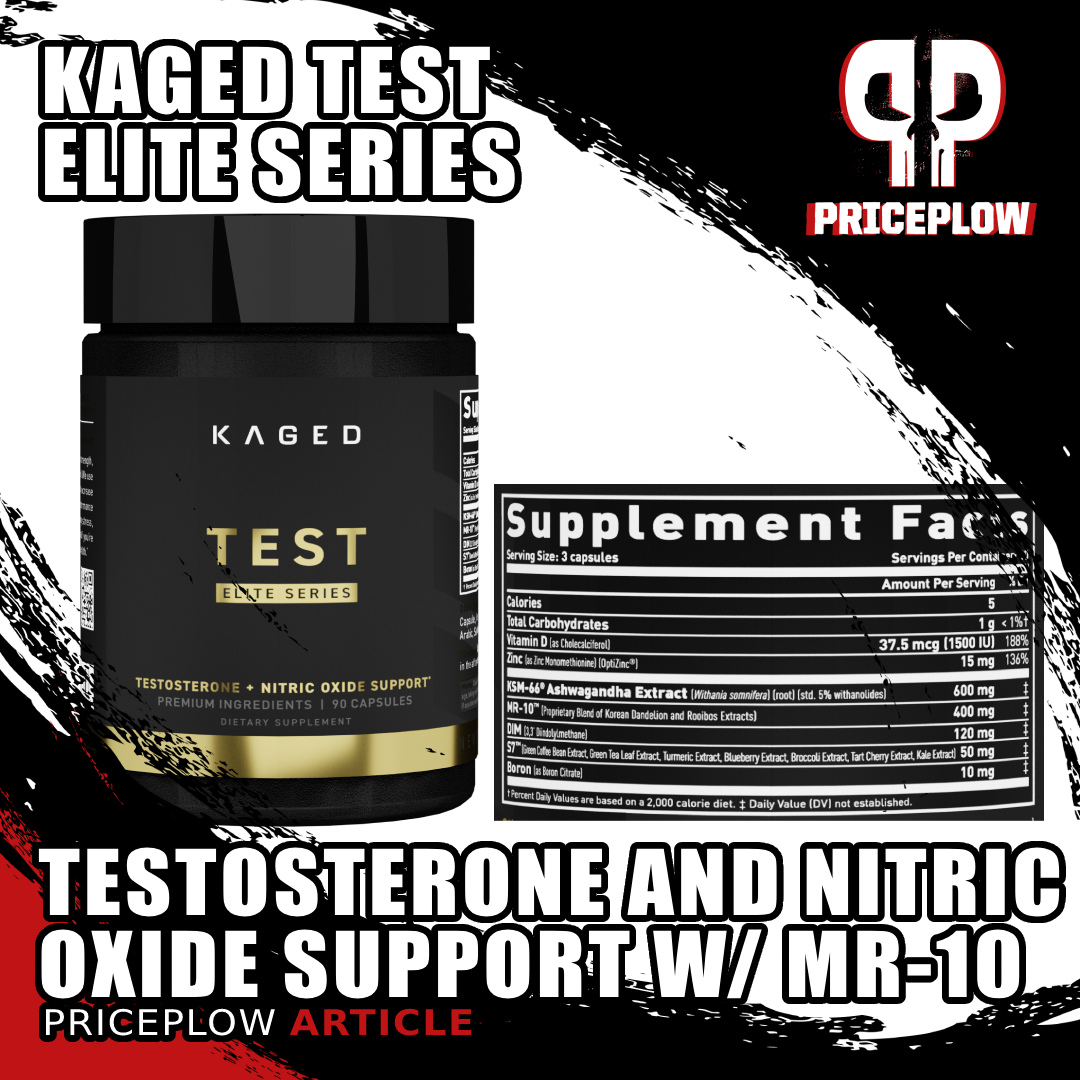
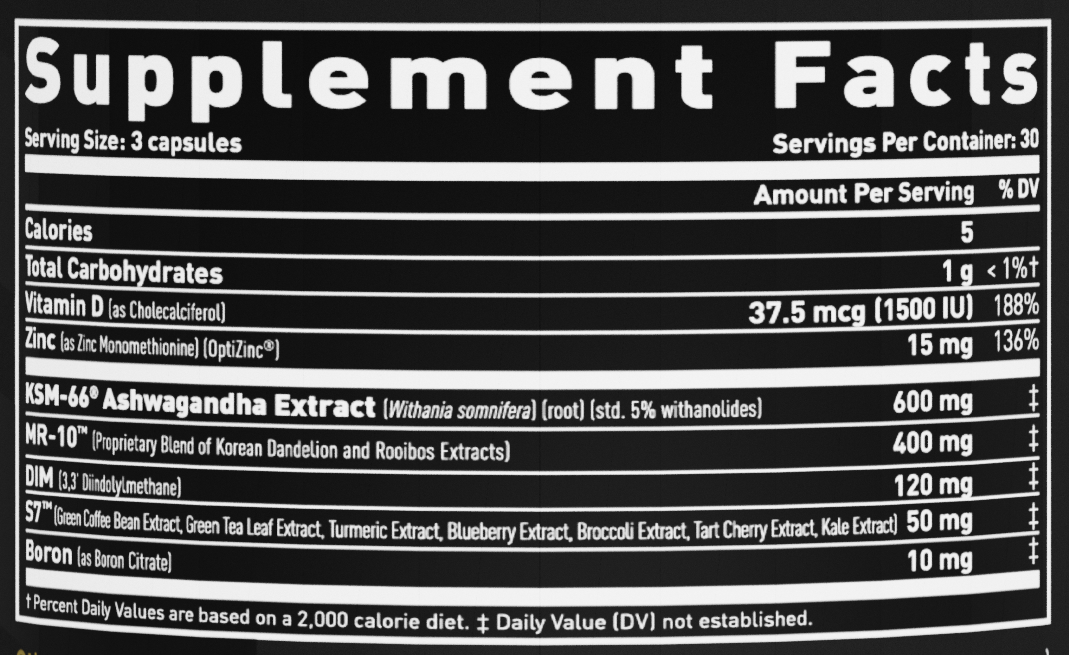
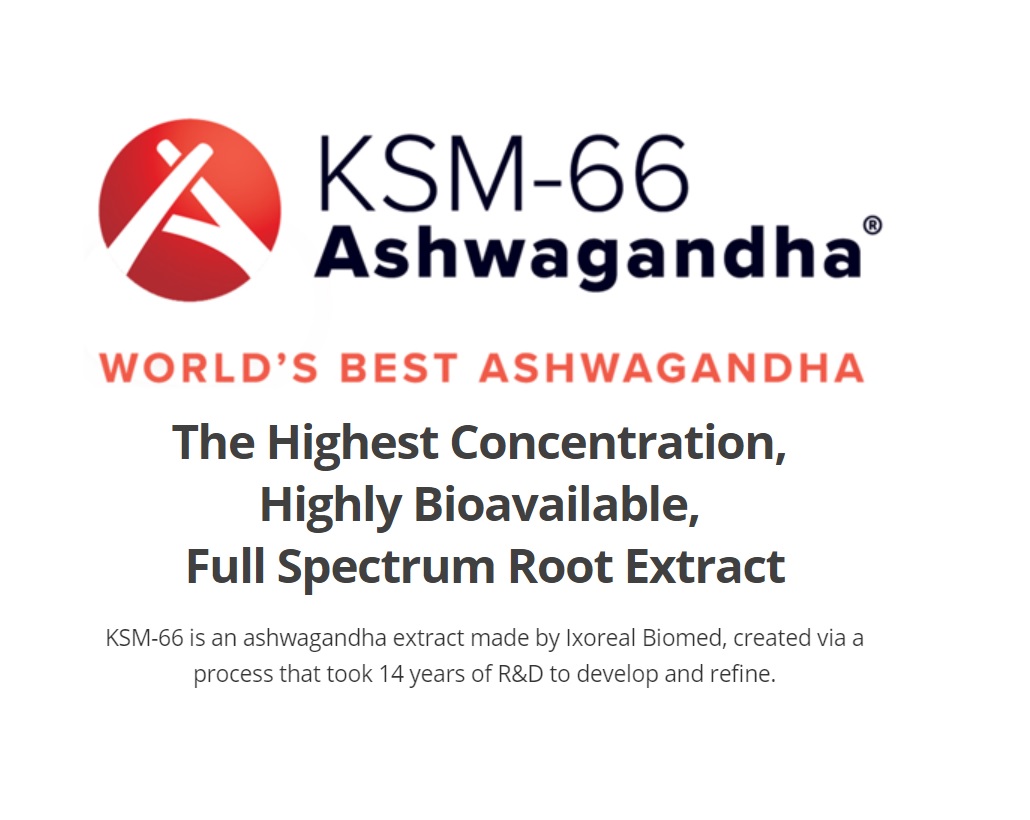
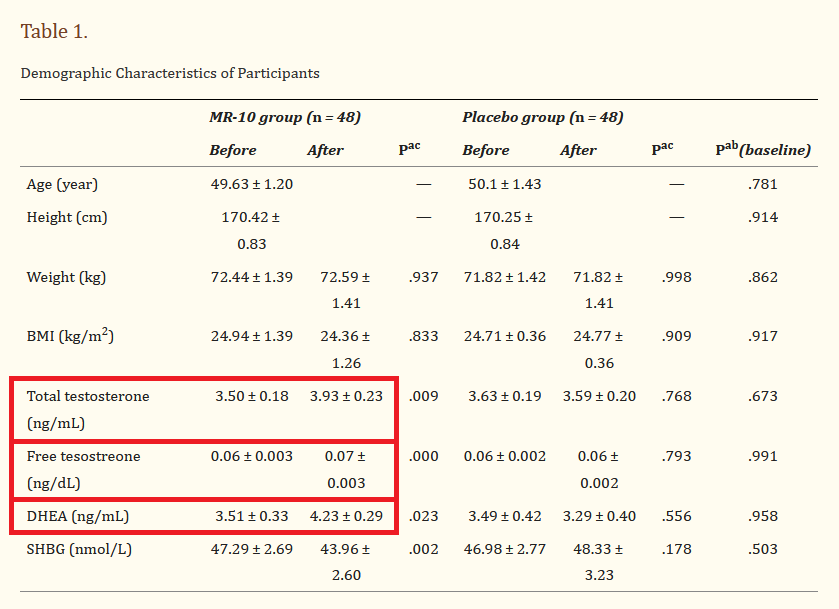
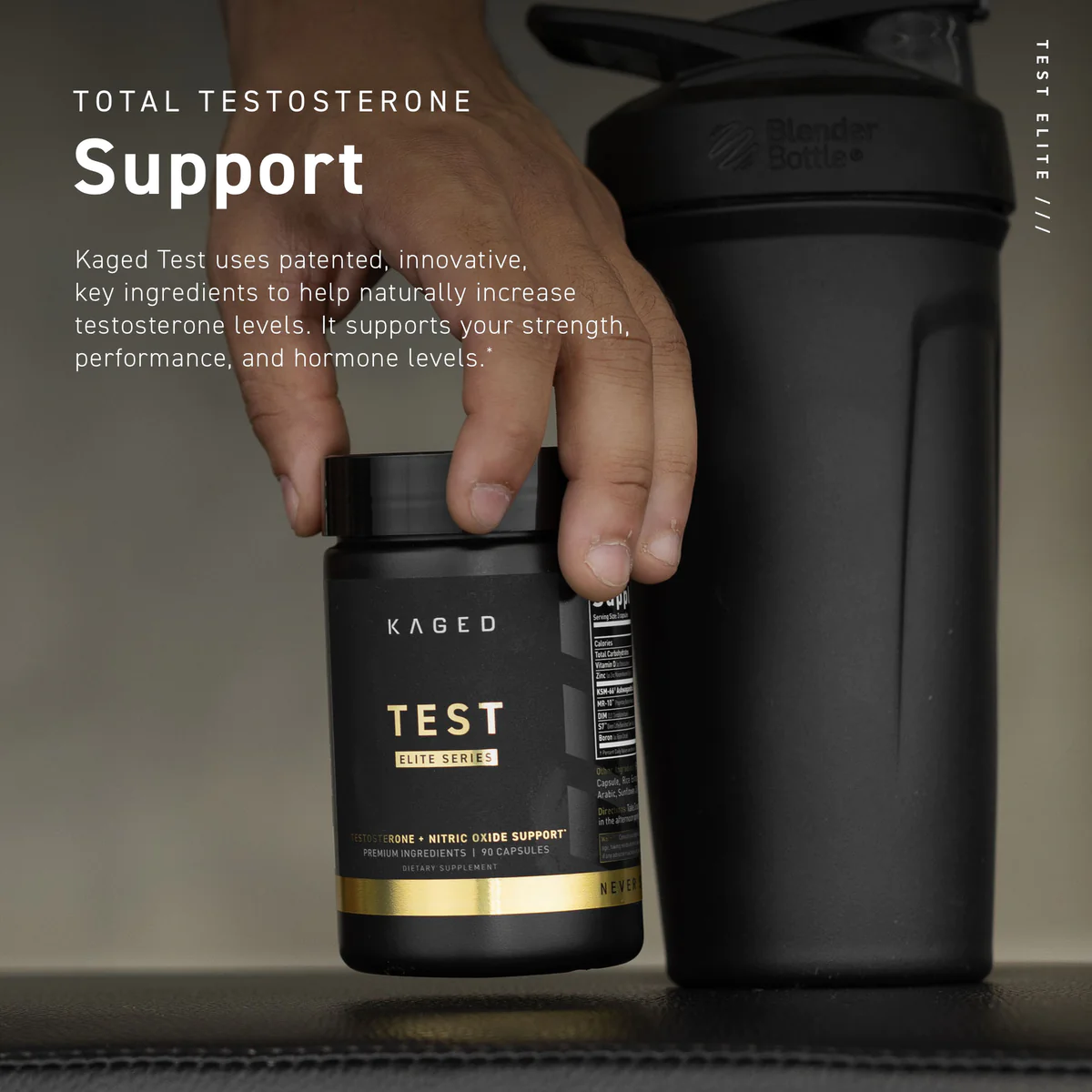
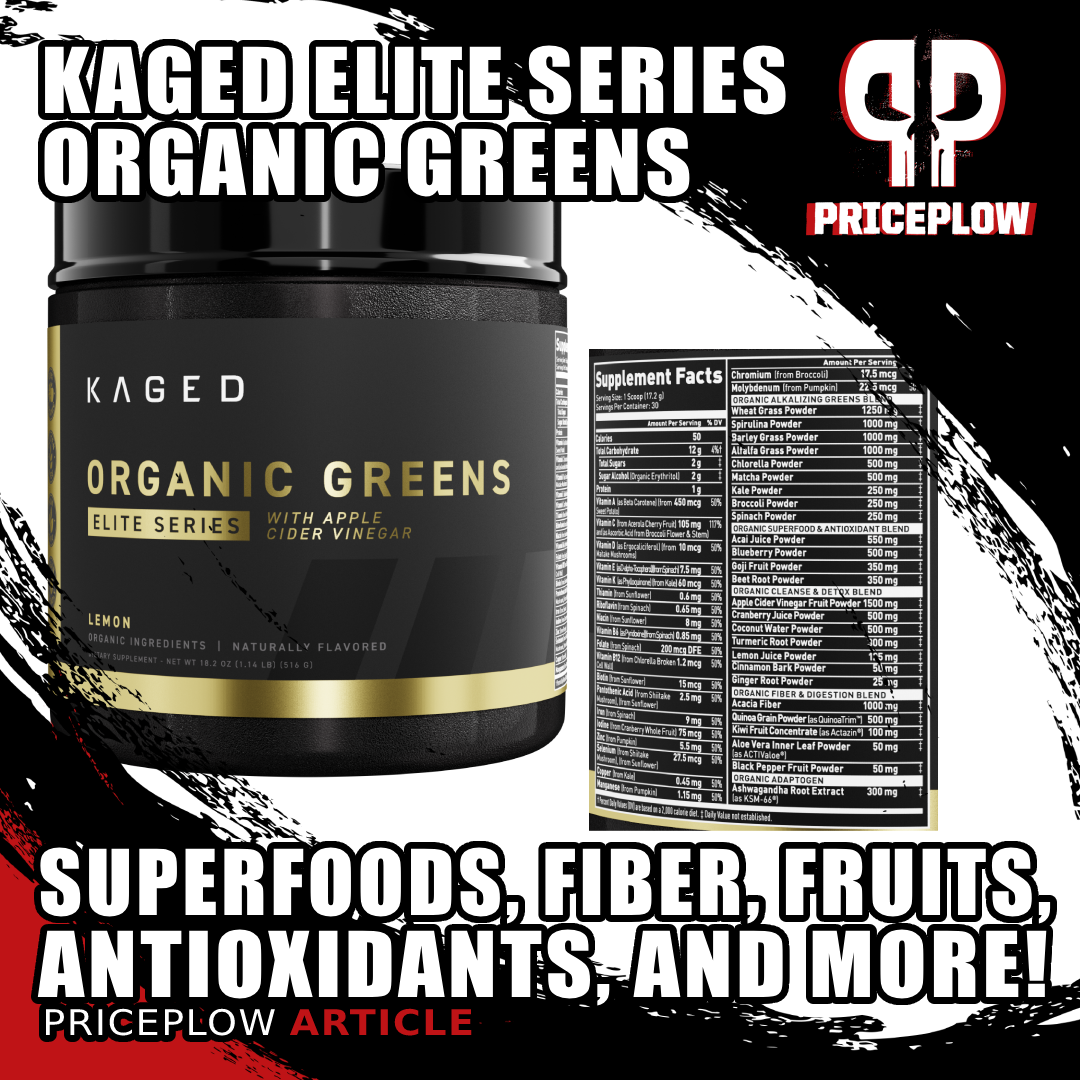
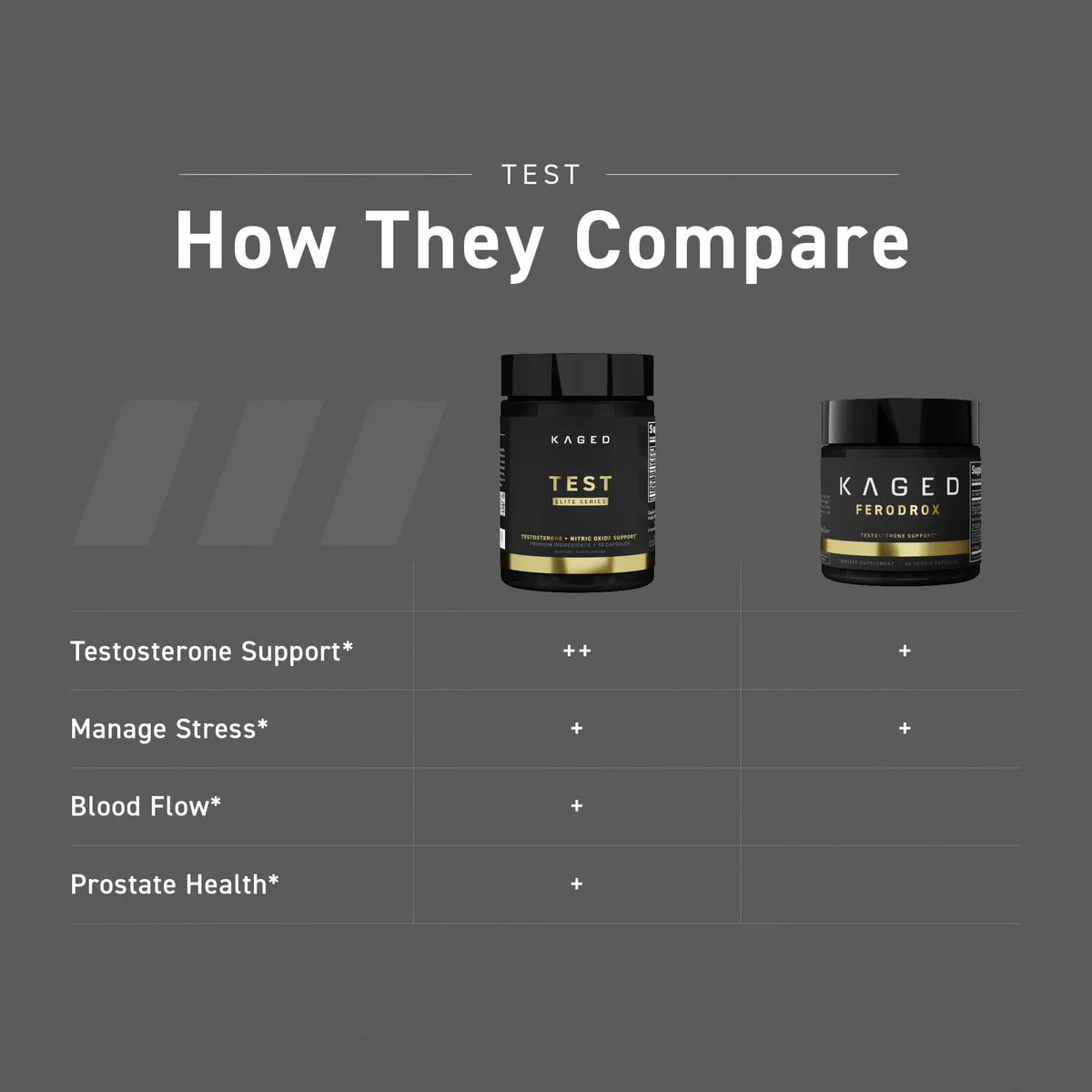
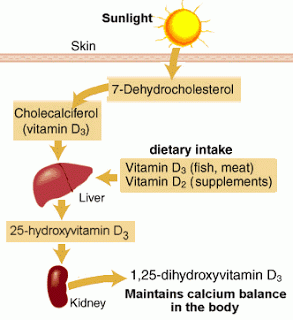
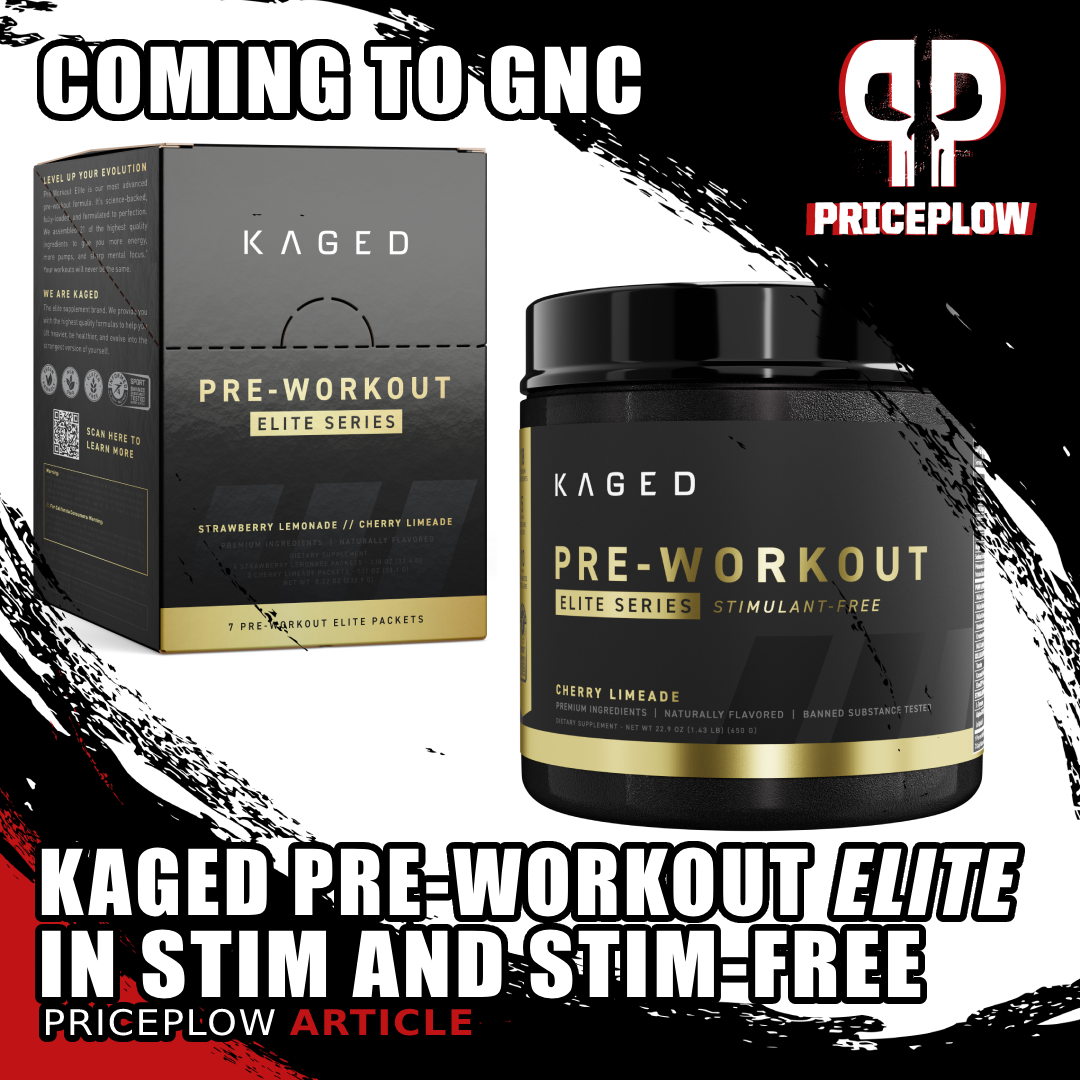


Comments and Discussion (Powered by the PricePlow Forum)